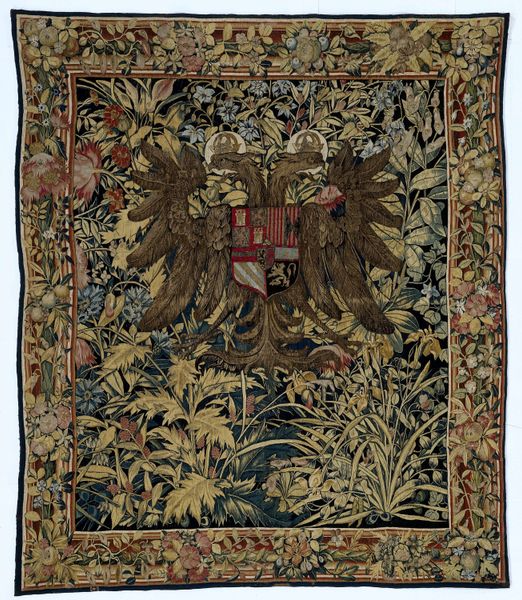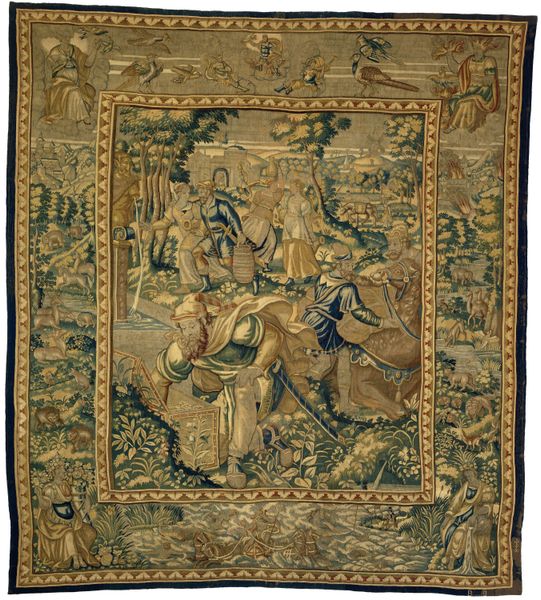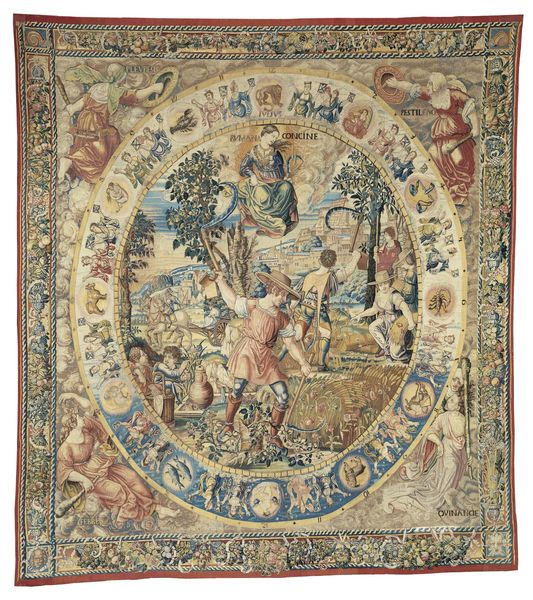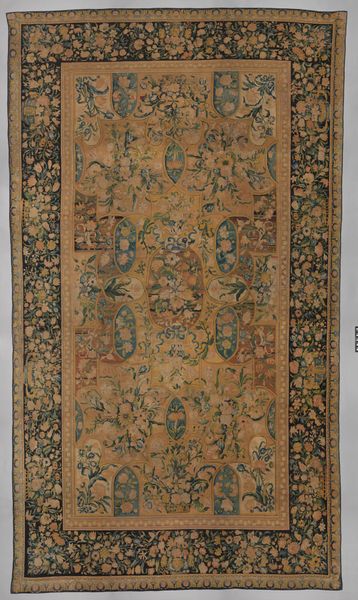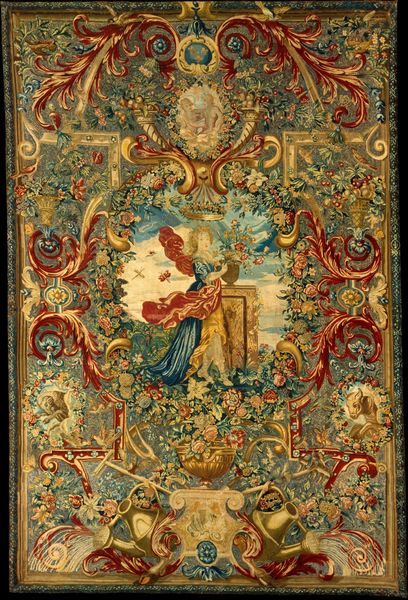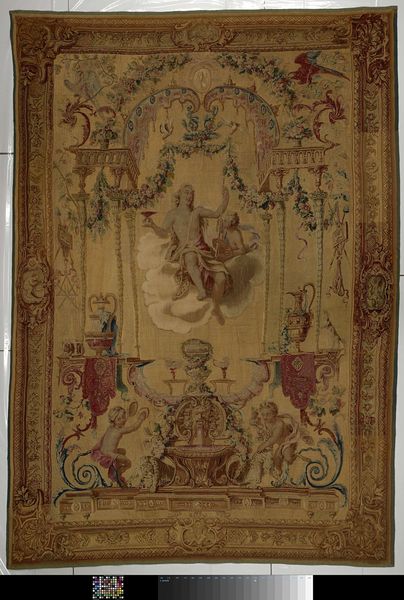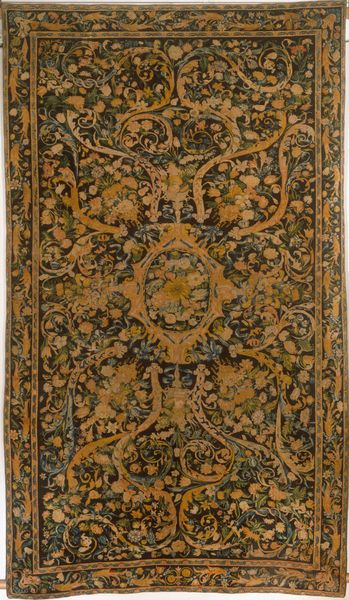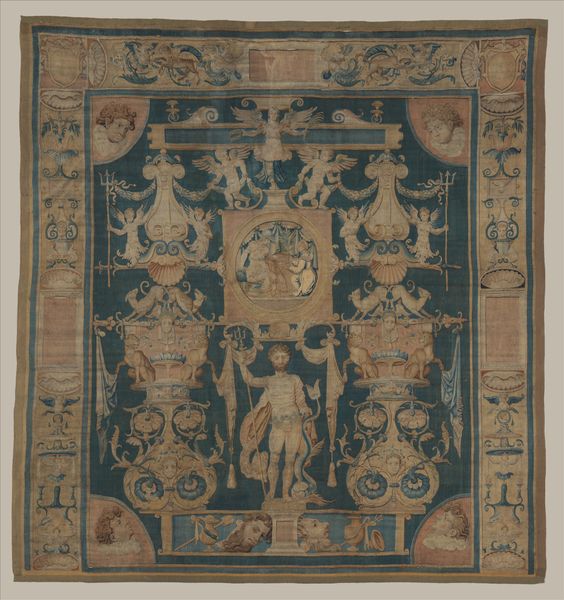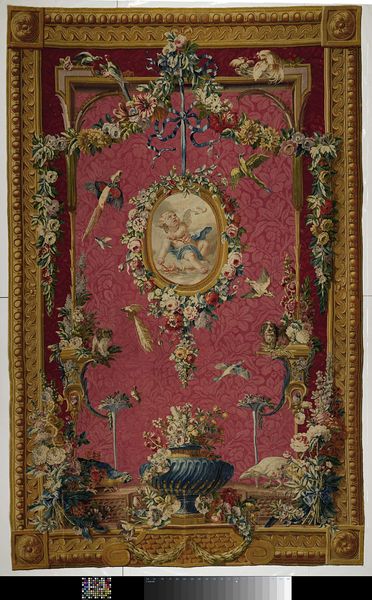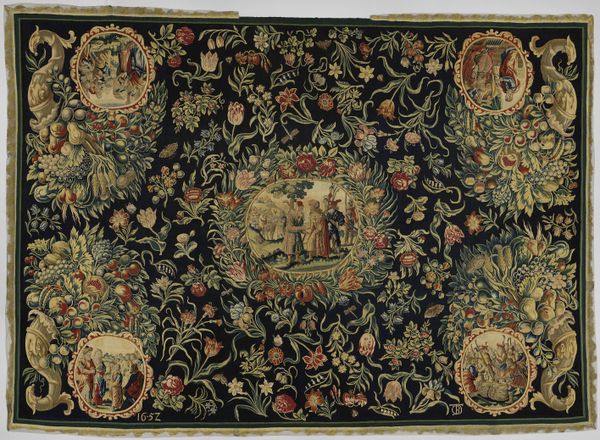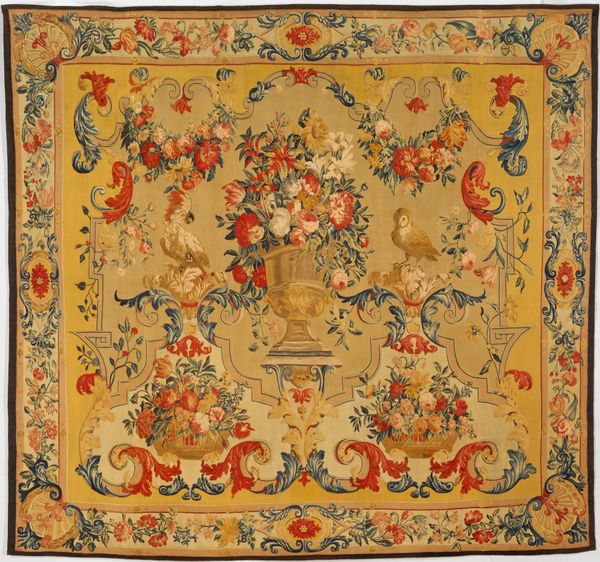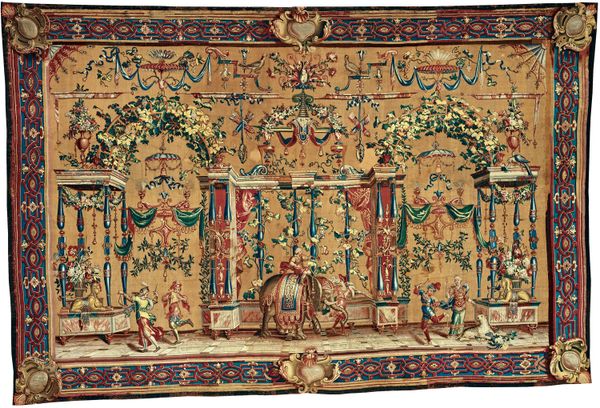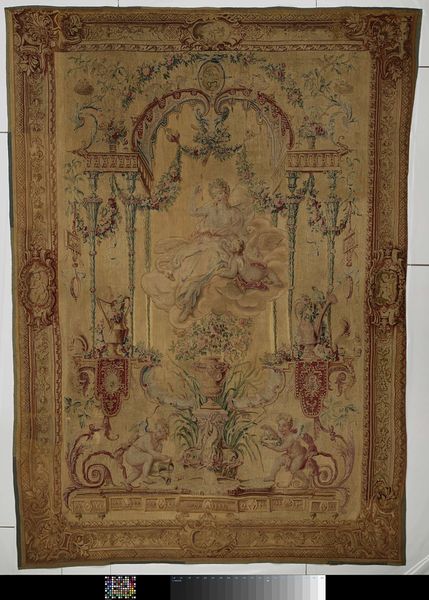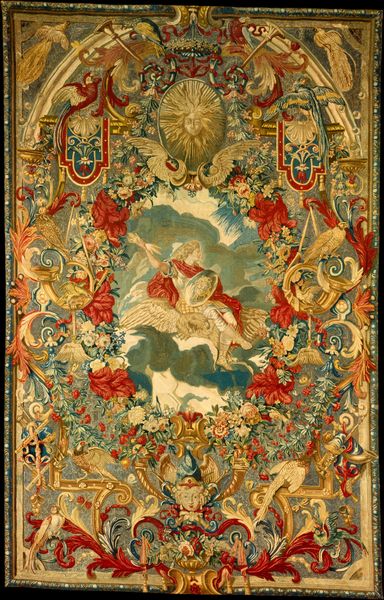
mixed-media, textile
#
portrait
#
mixed-media
#
allegory
#
textile
#
11_renaissance
#
history-painting
#
decorative-art
Dimensions: height 200.5 cm, width 175 cm
Copyright: Rijks Museum: Open Domain
Editor: This striking textile work is "Tapestry with the arms of Emperor Charles V," made around 1540 to 1555 by Willem de Pannemaker. I am captivated by the incredible detail and density. What's your take on it? Curator: From a materialist perspective, the tapestry immediately raises questions about its production. The intense labor involved in creating such a large, intricate piece! Think about the sourcing of the wool or silk, the dye processes... Each stage had economic and social implications, didn't it? This wasn't simply ‘art’ springing from individual genius; it was a collaborative enterprise deeply embedded in the social and economic structures of the time. Editor: Absolutely. How do we understand its function back then? Was it purely decorative, or something more? Curator: More than decorative, definitely! It proclaims power. But how is that power *materialized*? The raw materials speak volumes about international trade routes and manufacturing techniques of the Renaissance. Furthermore, tapestries like this would have been incredibly expensive. Owning one broadcasts the commissioner's wealth, doesn't it? How else could Charles V display such power and wealth, then control who gets to appreciate and maybe even own his creation? Editor: That’s interesting. So it's a status symbol literally woven from the resources of an empire? The control over materials and labour becoming as important as the artistry itself? Curator: Precisely! It underscores how art, even then, wasn’t separate from the political and economic landscape, but a direct reflection and instrument of it. Think about the choice to use textiles, traditionally associated with craft. Does this elevate the material to high art or does it challenge our understanding of art and power itself? Editor: Wow. I'll definitely be considering all the labor and materials, the hidden histories of creation and display, every time I look at a tapestry. Curator: Excellent! Hopefully, now when seeing a piece like this we can really understand not only the power of Charles V, but the artistry and implications of such creation, and the labour that goes behind the craft itself.
Comments
rijksmuseum about 2 years ago
⋮
This tapestry symbolizes the power of the Habsburg Emperor Charles V. Surrounded by abundant plants and flowers, a crowned double-headed eagle bears his coat of arms. Charles was ruler, among others, of Austria, Hungary, Sicily, Spain, Burgundy, and the Low Countries. Until his abdication in 1555, he was the most powerful man in Europe. Such tapestries were probably used on festive occasions.
Join the conversation
Join millions of artists and users on Artera today and experience the ultimate creative platform.
